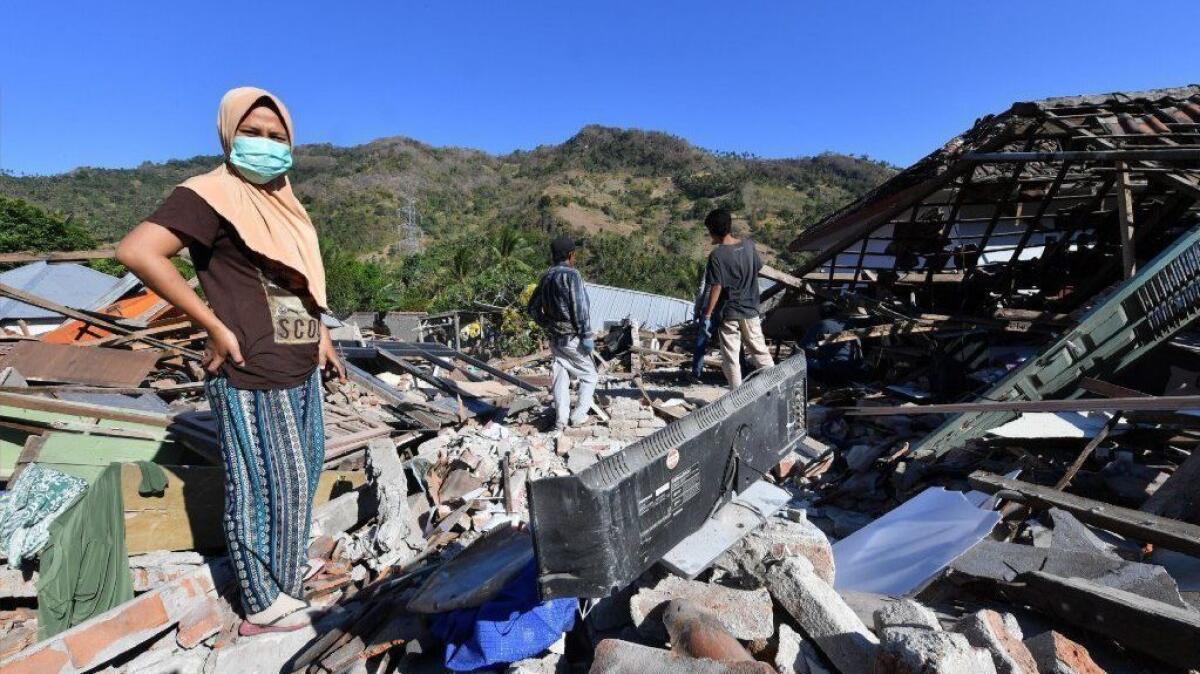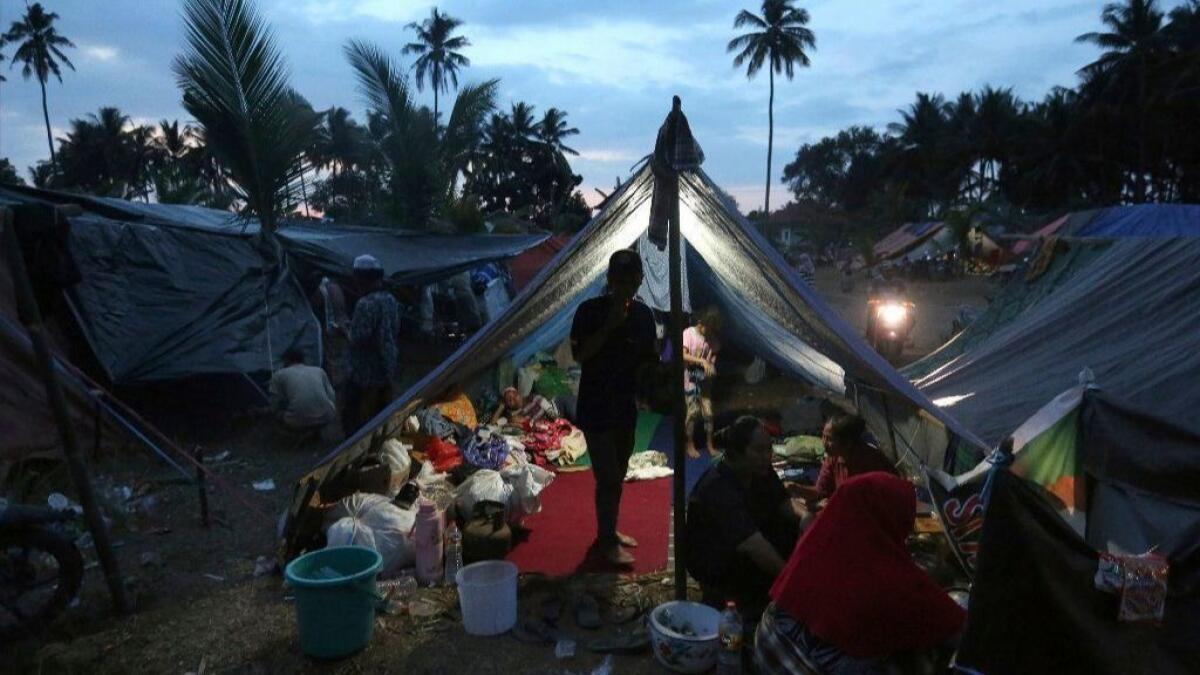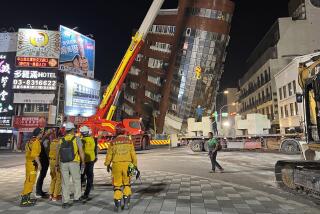Power and water outages plague quake-ravaged Indonesian island as death toll rises to 131

Relief workers and soldiers worked to restore electricity, distribute tents and set up temporary kitchens Wednesday as officials raised the death toll in a 6.9-magnitude earthquake on the Indonesian island of Lombok to 131.
An additional 26 fatalities were confirmed from Sunday’s temblor as relief teams were finally reaching some villages and mountainous areas that had been inaccessible due to landslides, collapsed bridges and other damage.
But as emergency crews comb more of the eastern Indonesian resort island, the death toll “will continue to grow,” said Sutopo Purwo Nugroho, spokesman for the Indonesian Disaster Management Agency.
“There is a lot of damage,” Nugroho told a news conference in Jakarta, adding that another 1,500 people were injured and 155,000 were displaced from their homes.
Nugroho said all the fatalities so far are Indonesians.

Many of those affected by the earthquake — the second to hit the island in a week — have been sleeping in the open outside damaged or flattened homes and have been cut off from rescue and aid teams trying to negotiate damaged roads and bridges.
Relief workers Tuesday pulled at least two people alive from the rubble of buildings, including one man who was trapped when a mosque collapsed during evening prayers.
Rosemarie North, Asia-Pacific regional communications manager for the International Federation of the Red Cross and Red Crescent, said that “some places have been cleared up a lot since Monday, but there are still places that no one’s been able to reach yet.”
“We are still seeing bridges down and landslides, and huge traffic jams in some places,” North said.
Officials have recommended that those affected by the disaster try to move downhill toward relief teams struggling to hurdle cracked and cratered roads.
The Indonesian Red Cross said its rescue workers had reached West Pemenang in northern Lombok, believed to be one of the worst affected areas, where they found hundreds of houses heavily damaged. As of Wednesday morning, “people are still in dire need of clean water, blankets and tarpaulins,” the group said on Twitter.
Around 5,000 tourists were evacuated Monday and Tuesday from the Gili Islands off the north of Lombok, where the earthquake also caused massive damage. Most of the visitors were taken on crowded boats to Bali, the nearby resort island where two of the deaths took place.
Almost 6 million tourists visited Bali last year, about half of whom were Australian or Chinese. Visitors to Lombok usually arrive via Bali, a 3½-hour ferry journey across the Lombok Strait.
Lombok, with its hiking, turquoise-water diving and relatively quiet beaches, is seen as an escape from Bali’s Cancun-style hedonism.
But undermining the allure of such lush physical charms is Indonesia’s geography and geology. Sitting on the so-called Pacific Ring of Fire, it is one of the world’s more seismically active countries.
“We experience a lot of earthquakes, we have a lot of volcanoes, it is part of life for us,” said Danny Hilman Natawidjaja of the Indonesian Institute of Sciences.
Since a 9.1-magnitude Indian Ocean earthquake and tsunami killed more than 230,000 people across the region in 2004, there have been several more deadly earthquakes in Indonesia.
Spanning the vast archipelago of 260 million people are 130 active volcanoes stretching from Aceh on Sumatra island in the northwest to Papua in the east –roughly the same distance as from Alaska to New York.
Awareness of earthquakes and tsunamis has increased since the 2004 disaster. The coast of Aceh is dotted with flat-roofed towers where people in low-lying areas can climb to seek shelter in case of a tsunami.
But even before Sunday’s earthquake, there were calls for Indonesia to ensure that the low buildings that are typical of island villages were more quake-resistant.
“We have the rules, the building code, but that is just for [buildings of] four stories or more,” Natawidjaja said. “But the buildings with less than four floors, they don’t have the same obligations.”
Roughneen is a special correspondent. Times staff writer Shashank Bengali contributed to this report from Mumbai, India.
More to Read
Start your day right
Sign up for Essential California for news, features and recommendations from the L.A. Times and beyond in your inbox six days a week.
You may occasionally receive promotional content from the Los Angeles Times.






